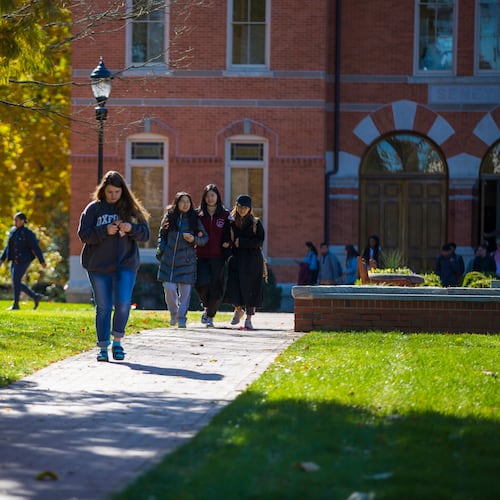Georgia Department of Education description of the decision facing school districts.
Districts have until June 30 to choose either the status quo or two main alternatives: some form of charter (system charter, system of charter clusters or system of charter schools) or what’s called “Investing in Educational Excellence” system, or IE2. The premise: freedom and flexibility will increase innovation and student performance.
All options except status quo require a contract, between the district and the state board of education, that defines higher academic expectations and other goals in exchange for waivers from state laws, rules and guidelines. The waivers can save money.
Key feature of status quo: Loss of waivers except in extraordinary circumstances.
Key feature of charter district: Requirement for school-level governance. Consequences of failure to attain goals include loss of charter, with consequent loss of waivers.
Key feature of IE2: No requirement for school-level governance. Consequences of failure to attain goals include potential loss of governance over schools that fail to meet targets after five years, with control taken by a charter governance board, another school system or a private entity, among other possibilities.
Cherell Lawson helps injured athletes for a living, and on the side she shares her knowledge with Fulton County high school students.
The athletic trainer doesn’t have a teaching credential, so her part-time engagement at Northview High wouldn’t be possible in most other Georgia schools. Her expertise suffices, though, because this school is part of a charter district that can get waivers from state requirements for things like teaching credentials.
Other large Atlanta area districts may soon become charter districts, because of a decision they have to make by next summer. The choice will affect how much it costs to run the districts and who calls the shots, and the prospect worries some parents. About a quarter of a million students will be affected by the pending decisions in Atlanta and DeKalb and Cobb counties.
Georgia districts have a big financial incentive to pursue either charter status or another model called “Investing in Educational Excellence,” or “IE2.”
They can reject either option, but doing so may cause them to lose money-saving waivers that have allowed them to exceed state caps on class sizes and to cut attendance calendars below the minimum 180 days. The waivers, popular during the recession, are still used in most of Georgia’s 180 districts as a way to balance budgets.
Gwinnett County Schools, Georgia’s biggest district, chose IE2 in 2009. Fulton, Georgia’s fourth-largest district, is in the third year of its charter. It is the biggest school system in the state to get that status. Those counties’ experience shows some of the challenges of the switch to either model.
In charter systems, officials must re-engineer central offices to support decision-making by local school governance councils. Under IE2 there’s no requirement for those governance councils. Both types of systems get waivers.
Cobb is leaning toward IE2, DeKalb is headed down the charter route and Atlanta hasn’t decided.
The General Assembly adopted these new models in the late 2000s, after districts complained that state rules were tying them down. Their complaint boiled down to this, said Lou Erste, the official who oversees “flexibility” options for the Georgia Department of Education: “Get the state off our back so we can improve student performance because we’re spending all our time following all these rules.”
Parents are wary about the scope of the proposed changes under a charter. Some schools, especially those with high poverty, already have a hard time maintaining involvement in PTAs, which don’t have near the authority and responsibility that a governance council, would have. How will they find people to contribute sustained volunteer hours to local governance?
“If the governance is not there, then it means the charter school is not going to work,” said Merrill White, a retired principal with children in a DeKalb charter school. “There will be a complete breakdown,” said White, who was speaking at forum held by the district in south DeKalb last month.
But Ken Zeff, hired by Fulton Superintendent Robert Avossa to oversee that district’s charter transition, said parents of all economic means have gotten involved. “That’s because they feel like they can make an impact,” he said, adding that local governance and a strategy tailored for each school are the key to improving performance.
James Reese, whose 17-year-old son attends Westlake High School in south Fulton, said parents have had more say on important personnel appointments, including the selection of the principal. An SAT-prep course was added to class offerings, helping students improve their test performance, Reese said.
Gwinnett, the state’s largest school district, went IE2 in 2009, with the goal of raising academic performance among low-income students and students with disabilities. Most schools have met the district’s annual targets, but four failed to measure up in at least three years. Central Gwinnett and Meadowcreek high schools never met their targets.
The rules under IE2 allow for conversion of failing schools to charter oversight, among other consequences. The state is still assessing Gwinnett’s performance. “They’ve been very willing to work through these issues as long as (the school is) showing improvement,” said Steve Flynt, Gwinnett’s chief strategy and performance officer.
The district got a one-year extension pending a state performance review. District administrators believe the flexibility has been helpful and want another five years. Centerville Elementary School principal Brenda Johnson credited IE2 for improved scores by students with disabilities and English language learners.
Charter districts get a modest financial benefit beyond the waivers — up to $4.5 million in grants apiece. The governance council at one Fulton school, Centennial High, secured about $200,000 from Fulton’s allotment to convert a standard library into what the school is calling a “learning commons.” It’s a place where students can bring their technology and collaborate on projects. The school’s strategic plan calls for project-based, personalized learning.
At Fulton’s Northview High, Principal Brian Downey serves on the governance council with parents, community members, teachers and students. The council surveyed the community and found a desire for a strong focus on health science, which led to the the hiring of Lawson, the athletic trainer. Their reasoning, said Downey: “If the profession is where these kids want to go, well let’s get a professional from that field.”
On a recent afternoon, one of Lawson’s health science students, Carson Pearson, 14, was wrapping a boy’s leg with a bandage and splints. “It makes me feel better about what I’m learning because she is an expert,” said the freshman, who wants a career in health care.
Northview High also plans to create a college-style psychology lecture with about 70 students, using a waiver from the cap on class sizes. In exchange for the release from state mandates, schools will have to show improved performance on state measures, including the College and Career Ready Performance Index, which is derived primarily from test scores.
It’s too early to know whether the increased flexibility in Fulton has resulted in better performance. Erste, the DOE official, said the state is still assessing the district’s performance.
Meanwhile, parents in DeKalb and Atlanta have a lot of questions, and trepidation, about such a big change.
“There’s still a lot that we don’t know,” Julie Abram, who has three kids in Atlanta schools, said at a recent community meeting. She said she didn’t think parents had enough information about how Atlanta would use more local control to improve outcomes.
“Where does that leave your schools with low parent participation? Where does that leave your principals who all of a sudden have more responsibility than they’ve ever had? What kind of mentoring and training will be done?” Abram asked. “It’s hard to understand what this whole change would even look like.”
Staff writer Molly Bloom contributed to this article.
Keep Reading
The Latest
Featured




